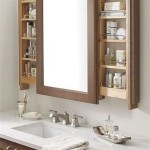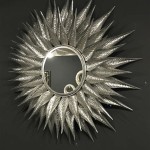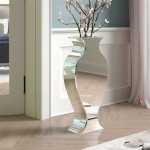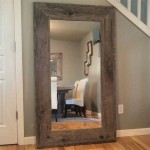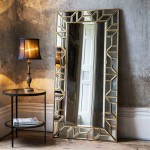Why Does a Concave Mirror Invert an Image?
Concave mirrors, with their inwardly curved reflecting surfaces, possess the intriguing ability to invert images under specific conditions. This inversion, where the image appears upside down compared to the object, is a direct consequence of the mirror's geometry and how it reflects light rays. Understanding this phenomenon requires a closer look at the principles of reflection and the unique properties of concave mirrors.
The fundamental principle governing the behavior of light striking any reflective surface is the law of reflection. This law states that the angle of incidence, the angle between the incident ray and the normal (a line perpendicular to the surface at the point of incidence), is equal to the angle of reflection, the angle between the reflected ray and the normal. This simple yet powerful law is the foundation for understanding image formation in mirrors.
Concave mirrors are characterized by their spherical reflecting surface, where the center of curvature (C) represents the center of the sphere from which the mirror is a section. A crucial point on the mirror's axis is the focal point (F), located halfway between the mirror's surface and the center of curvature. The distance between the mirror and the focal point is known as the focal length (f). These parameters play a vital role in determining the characteristics of the reflected image.
To understand image inversion, consider a point object placed at a distance greater than the center of curvature of a concave mirror. Light rays emanating from this point diverge and strike the mirror's surface. Upon reflection, these rays converge at a specific point between the focal point and the center of curvature. This point of convergence forms the real image of the point object.
The inversion arises from the way the light rays are reflected. Rays originating from the top of the object strike the lower portion of the mirror and, following the law of reflection, are reflected upwards. Conversely, rays from the bottom of the object strike the upper portion of the mirror and are reflected downwards. This crossing of rays leads to the inversion of the image, with the top of the image corresponding to the bottom of the object, and vice versa.
Ray diagrams, a graphical method using representative light rays, effectively illustrate this inversion process. Consider three principal rays: a ray parallel to the principal axis, which after reflection passes through the focal point; a ray passing through the focal point, which after reflection travels parallel to the principal axis; and a ray passing through the center of curvature, which, after reflection, retraces its path. These rays, originating from a point on the object, intersect at a corresponding point, forming the inverted real image.
The size and location of the inverted image depend on the object's position relative to the mirror. When the object is beyond the center of curvature, the image is real, inverted, and smaller than the object. When the object is between the center of curvature and the focal point, the image is real, inverted, and larger than the object. Interestingly, when the object is placed at the focal point, the reflected rays become parallel, and no real image is formed. Instead, the image is said to be formed at infinity.
When the object is placed between the focal point and the mirror, a different image characteristic emerges. In this case, the reflected rays diverge, and the image formed is virtual, upright, and magnified. The image appears to be located behind the mirror, as the diverging rays appear to originate from a point behind the mirror's surface. This is why concave mirrors are often used in cosmetic mirrors, providing a magnified and upright view of the face.
The magnification of the image, defined as the ratio of the image height to the object height, can be calculated using the mirror formula and the object and image distances. A negative magnification indicates an inverted image, while a positive magnification signifies an upright image.
The inversion phenomenon in concave mirrors is not merely an academic curiosity. It finds practical applications in various optical instruments and devices. Telescopes, for example, utilize concave mirrors to collect and focus light from distant celestial objects, forming inverted images that are then magnified by the eyepiece. Projectors similarly utilize concave mirrors to create magnified and inverted images on a screen.
Furthermore, concave mirrors play a crucial role in headlights and searchlights, where they reflect and focus light from a small source into a powerful beam. Solar cookers use large concave mirrors to concentrate sunlight onto a cooking vessel, generating high temperatures for cooking. Understanding the image formation and inversion properties of concave mirrors is essential for the effective design and utilization of these technologies.
The inversion of images in concave mirrors stems directly from the law of reflection and the geometry of the reflecting surface. The precise characteristics of the image, including its size, location, and orientation, depend on the object's position relative to the mirror. This fascinating property of concave mirrors has enabled numerous technological advancements and continues to play a significant role in various optical systems.
Objects In The Mirror Are Actually Images Article Khan Academy

Concave Mirror
Why Can We See Our Inverted Image Inside A Concave Mirror When The Is Formed In Front Of It And Not Behind Quora
Why Do Magnifying Mirrors Turn Images Upside Down Quora
Objects In The Mirror Are Actually Images Article Khan Academy

What Would You Use To Obtain A Real And Inverted Image For Any Position Of An Object Convex Mirror Or Concave Lens B C

Difference Between Real Image And Virtual With Practical S
Is It Right A Convex Mirror Always Forms An Inverted Image Quora

What Would You Use To Obtain A Real And Inverted Image For Any Position Of An Object Convex Mirror Or Concave Lens B C
Understanding Reflection Of Light On A Concave Mirror


